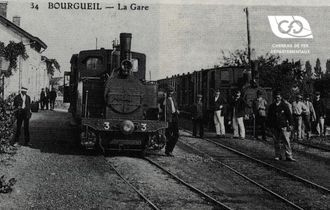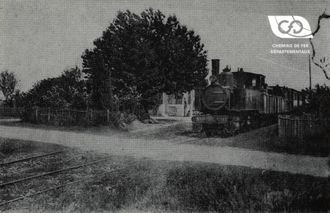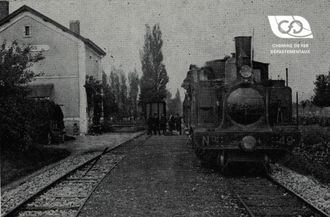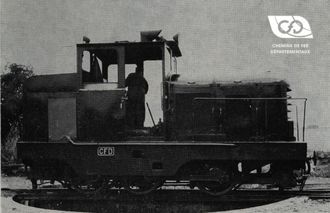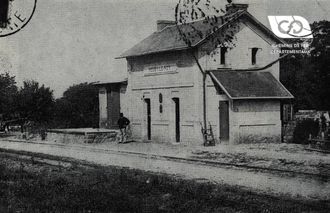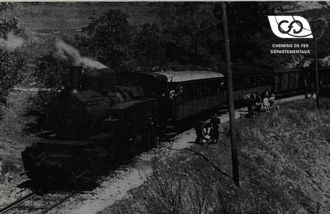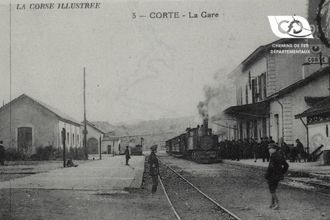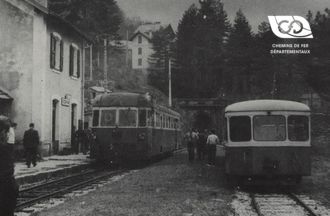The problem of speed variation and transmission of engine power to the various axles
The problem of the speed variation and the transmission of the driving force to the different axles had to be solved.
Speed variation
Speed variation was first attempted by using different gear trains, the engagement of which was facilitated by synchronization devices. These devices proved to be delicate for high power, but they presented a more serious disadvantage since the tractive effort was broken during the "gear change" operation. This variation in tractive effort produces ripples between cars that are more dangerous the heavier the trains and the longer the duration of the break in effort.
Some manufacturers have therefore imagined to shorten this duration by pre-selecting gear changes, for example, by "jumping" the power from one shaft to another by means of two clutches, one of which comes into action as soon as the other is released. This artifice reduces the breaking of the effort to a very short time, but by acting in this way, ? if the mass of the convoy keeps its speed, ? the instantaneous speed of the engine and part of the transmission vary brutally and these parts are subjected to overloads which have been the cause of the little success of this system.
The construction of mechanical transmissions is still faced with the difficult problem of continuity of effort, as the transmission of high power to the axles can always be solved at a reasonable price and weight.
As a result of the above considerations, it can now be said that the diesel locomotive problem is solved in a certain way regardless of whether the engine is "slow" or "fast" by using either electric or hydraulic transmission; the latter, however, presenting the expensive and difficult problem of transmission to the various axles with high torque.
The question of the day is no longer how to run diesel locomotives since this is common today, the question is how to improve them.
As the concept of long write-offs that had prevailed at the origins of the railway had disappeared, their purchase price had to be reduced so that they could be written off in a reduced number of years.
We must try to better adapt their power to the varying demands placed on them.
Their fuel consumption must be decreasing.
Maintenance costs must be reduced as well as the duration of immobilisation.
In order to reduce the purchase price of these machines, it is essential, on the one hand, to simplify their design and, on the other hand, to produce them using large series parts as much as possible.
In order for a machine to be simple, it seems necessary that it should be made up of parts of normal dimensions that can be produced in "general mechanics" workshops, not being subjected to exceptional work; it is therefore necessary to eliminate, in particular, all gears and transmission shafts subject to considerable torques. We consider, for example, that it is a simplification to attack the N axles with individual mechanisms that will be put into service according to the needs of the moment rather than with a single mechanism capable of transmitting the total power.
With regard to engine power, it is easy to see that engines with exceptional power are more expensive to buy per horsepower than standard engines, and that it is cheaper to buy more engines than to use a single high-powered engine.
The design of the axle or bogie power train is well suited to the fact that most operators require different locomotive horsepower requirements, and that the same power trains could equip different types.
If an operation needs machines with 250, 500 and 1000 HP, it seems obvious that it is in its interest that its "fleet" is made up of single, twin and four-engine engines.
With regard to adapting their power to the forces required, the design of a single-engine machine using its maximum power only under certain circumstances does not seem to lead to the best efficiency. A multi-motor machine where the individual drive elements can be put into operation almost instantaneously is less expensive in fuel and wear.
This idea was obviously inadmissible for steam engines, as it was inconceivable to equip them with several boilers and to have them come on demand.
By studying the efforts required from a locomotive during its use, we can see that these are of an almost constant value for quite long periods of time.
This is primarily due to the railway infrastructure that has been built to allow the use of steam engines. This is primarily due to the railway infrastructure, which was built to allow the use of steam engines. As far as possible, tracks were therefore laid out along the watercourses in order to avoid major differences in level, and when it was necessary to pass from one valley to another, major work was undertaken, establishing ramps that were as gentle as possible and therefore long and regular.
In the case of a line of valleys, a great deal of power is required at start-up and to maintain line speed, power can be significantly reduced.
For the other lines, a very high power is required for a fairly long time to climb the ramps, then in level flight it takes much less and to descend it takes no more power at all.
Therefore, it seems to be advantageous to distribute the maximum power among various drive elements that can be operated independently of each other.
The variable power of a locomotive is all the more appropriate since it is essentially required to tow variable loads.
We therefore believe it is advantageous to take advantage of the fact that diesel locomotives can easily be made to have variable power and grip, with the operating times at constant speed being long enough to start or stop part of the power train.
The following advantages result from the above:
- fuel consumption can be significantly reduced ;
- the wear of parts in service can be reduced ;
- one can reduce the purchase price for any given available power, since it can be obtained by multiplying a single power unit and can benefit from "series" prices;
And you get:
- a reduction in maintenance costs since the same components will have to be overhauled in all cases, whatever the power of the locomotive concerned, and these units are small and require only a small amount of tooling;
- a significant reduction in the downtime of the entire locomotive, as the power units can be exchanged for overhaul on all types of machines in a very short time, and in particular on poly-engines by exchanging only the units with the highest fatigue.
In support of the above proposals, we show :
Schematic layouts of locomotives of different power ratings consisting of the same power units, i.e.: 250 HP diesel engine at 1500 rpm, hydraulic coupler, 6-speed synchronised gearbox, axle attack calculated for a grip of about 30 t.
The 250 HP, 30 t tractor has no special features. The coupler ensures starting and the power of this machine is not sufficient to ensure that breaks in the hook force during gear changes cause violent reactions on the couplers.
It should be noted, however, that with a mechanical transmission, it is essential that train reactions cannot influence engine speed; the transmission must therefore not be reversible and this is easily achieved by interposing a freewheel.
This freewheel between the gearbox and the axle drive also has the great advantage of considerably increasing the speed of gear shifting.
In the case of locomotives with several engines, the couplers provide the required flexibility during starting and, in order to ensure continuous traction during gear changes, all that is required is for the device that controls them to act at different times on the different gearboxes. All but one of the engines therefore remain under load at all times. The result is a continuous effort on the towing hook without any artifice or complication.
This device, thanks to the presence of the free wheels, does not present any danger to the engines, because at no time can we fear the overspeed of the engines.
These freewheels allow either to voluntarily isolate the engines whose power is not necessary for a certain time, or to allow safety devices to immediately stop an engine which would not be in good operating conditions. The safety devices in question are, moreover, very simple since they cut off the injection as soon as the oil pressure is no longer sufficient or the water temperature is too high; the engines can thus be left unattended with total safety.
To date, tests have been carried out on twin-engine engines built according to these principles, and the advantages we have outlined have been demonstrated.
The normal track test locomotives were of two types:











